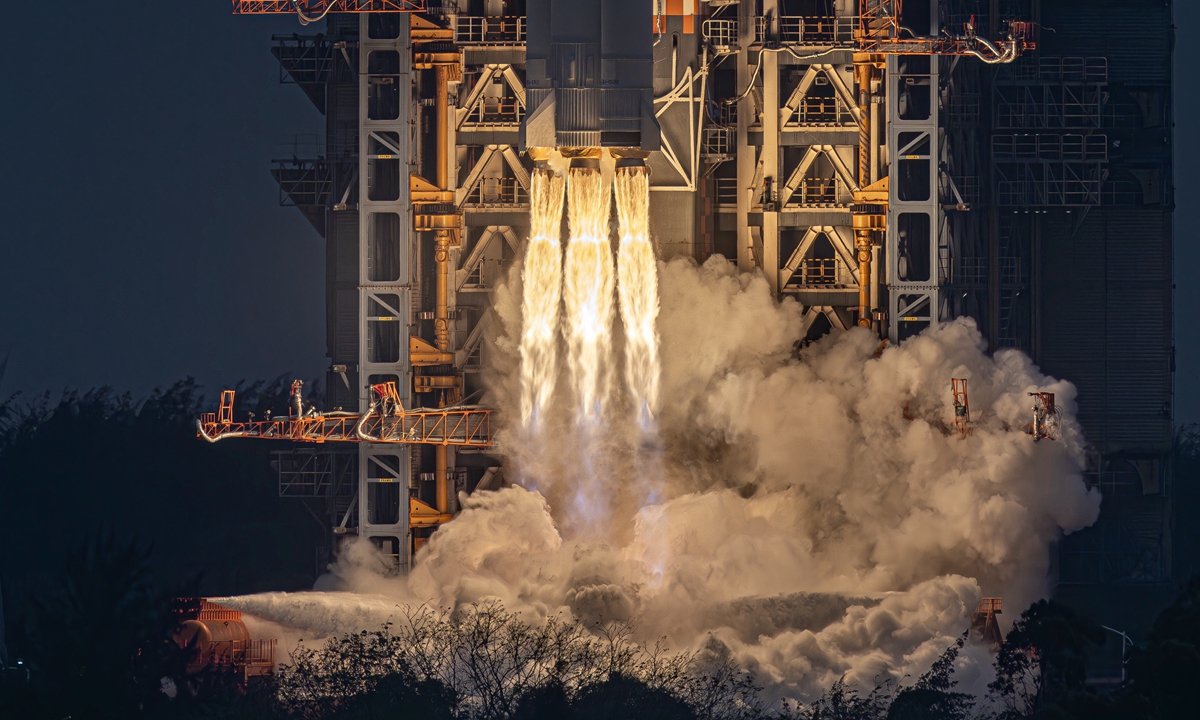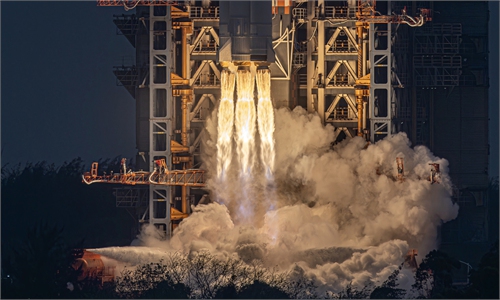
Photo: Zhang Jingyi
China's space development achieved another milestone with the successful operation of the propulsion subsystem of the Tiandu-2 satellite. Launched on March 20, the satellite is dedicated to testing communication and navigation technology for lunar exploration. Since April 3, the propulsion subsystem has been operating normally, marking the first successful application of the liquid ammonia cold gas micro-propulsion system in deep space exploration. Additionally, this signifies the maiden in-orbit application of China's 3D-printed storage tank technology, the Global Times learned from the subsystem developers on Tuesday.
The successful application of the Tian Du II satellite propulsion subsystem not only advances China's capabilities in deep space exploration but also contributes to the development of cost-effective solutions for satellite propulsion systems, opening new avenues for commercial space ventures, according to the project's developers.
Developed by the 801st Institute of the Sixth Academy of the state-owned space giant CASC, the propulsion subsystem of Tiandu-2 utilizes an integrated 3D-printed aluminum alloy storage tank, marking the first in-orbit application of such technology in China, the developers said in a statement it provided to the Global Times on Tuesday.
The tank was achieved through disruptive technological innovations in integration and lightweight design. Key challenges were overcome, enabling highly integrated installation of all components onto the tank and internal connectivity through 3D-printed channels, eliminating the need for duct connections. This approach significantly shortened the development cycle and effectively reduced costs.
The innovative design of the propulsion system, employing integrated modular design, boasts high thrust precision, lightweight construction, and low cost. This highly integrated propulsion system design holds tremendous potential in the commercial aerospace market, laying a solid foundation for future endeavors in batch production and networked launches of microsatellites.
On March 20, China successfully launched into preset orbit the Queqiao-2 relay communication satellite as well as Tiandu-1, Tiandu-2 communication and navigation technology experiment satellites, the key constellation supporting the country's subsequent Chang'e lunar exploration missions as well as international exploration programs.
At 1:32 am on March 25, the Tiandu-1, -2 satellites, after a flight approximately 112 hours, successfully carried out the braking maneuver at the near-moon orbit, 209 kilometers above the lunar surface.


